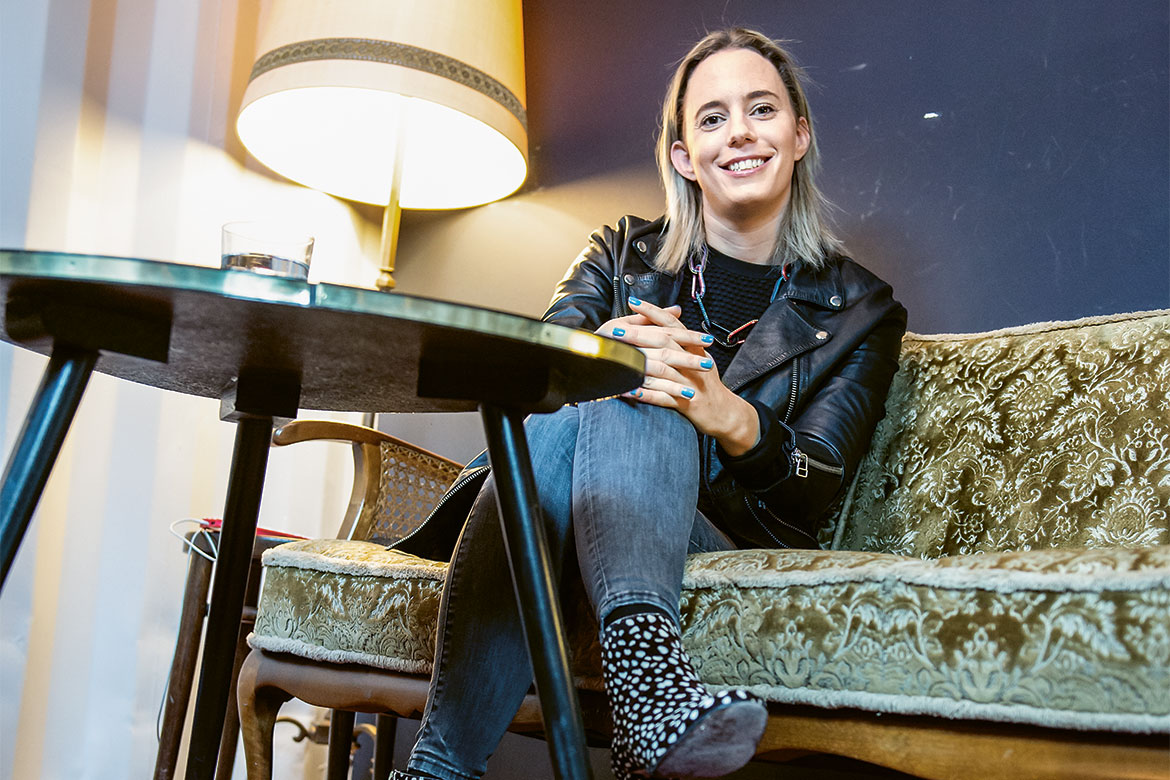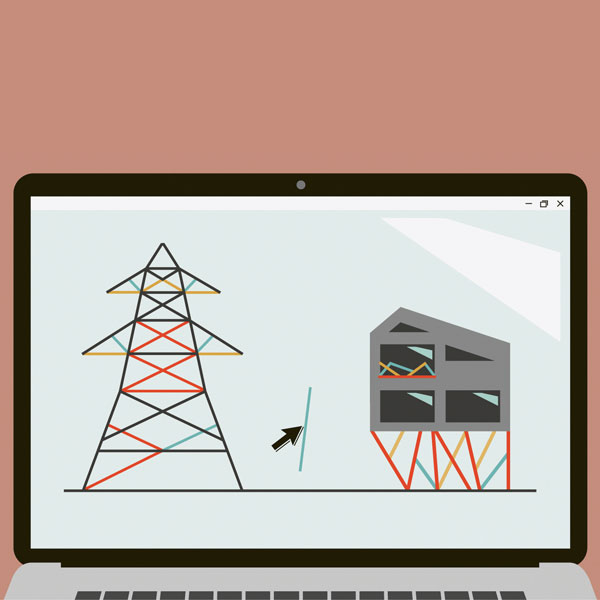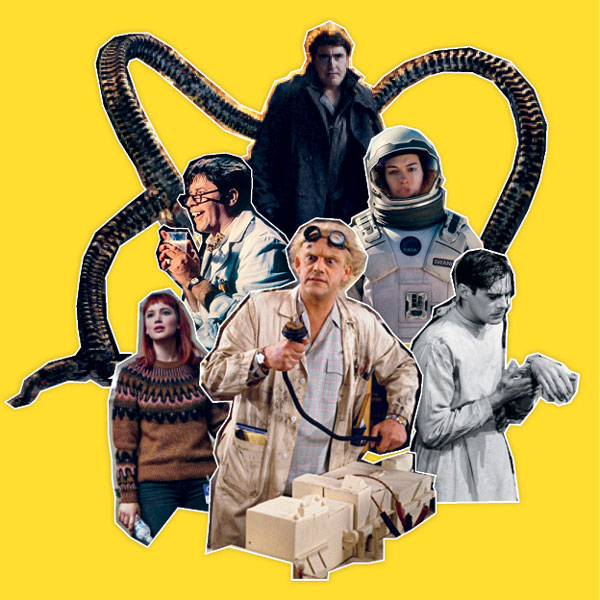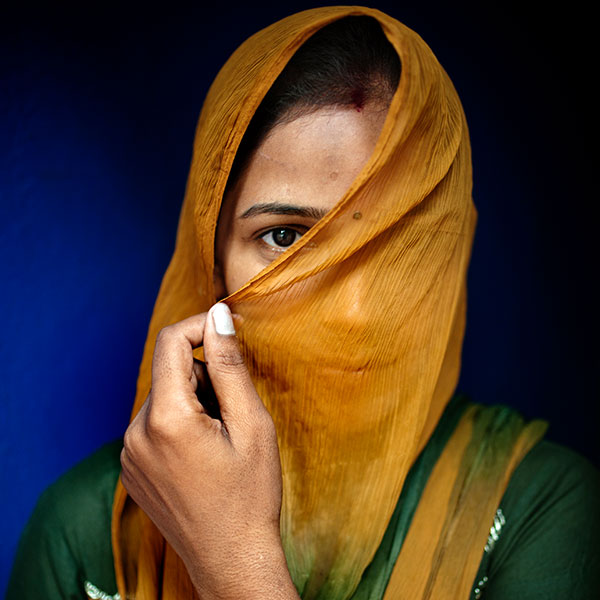Sandra Lösch reads Stone-Age stories in bones
Sandra Lösch uses human bones from several millennia ago to find out how people lived and died in the Stone Age. Every once in a while, she also manages to solve a cold case.
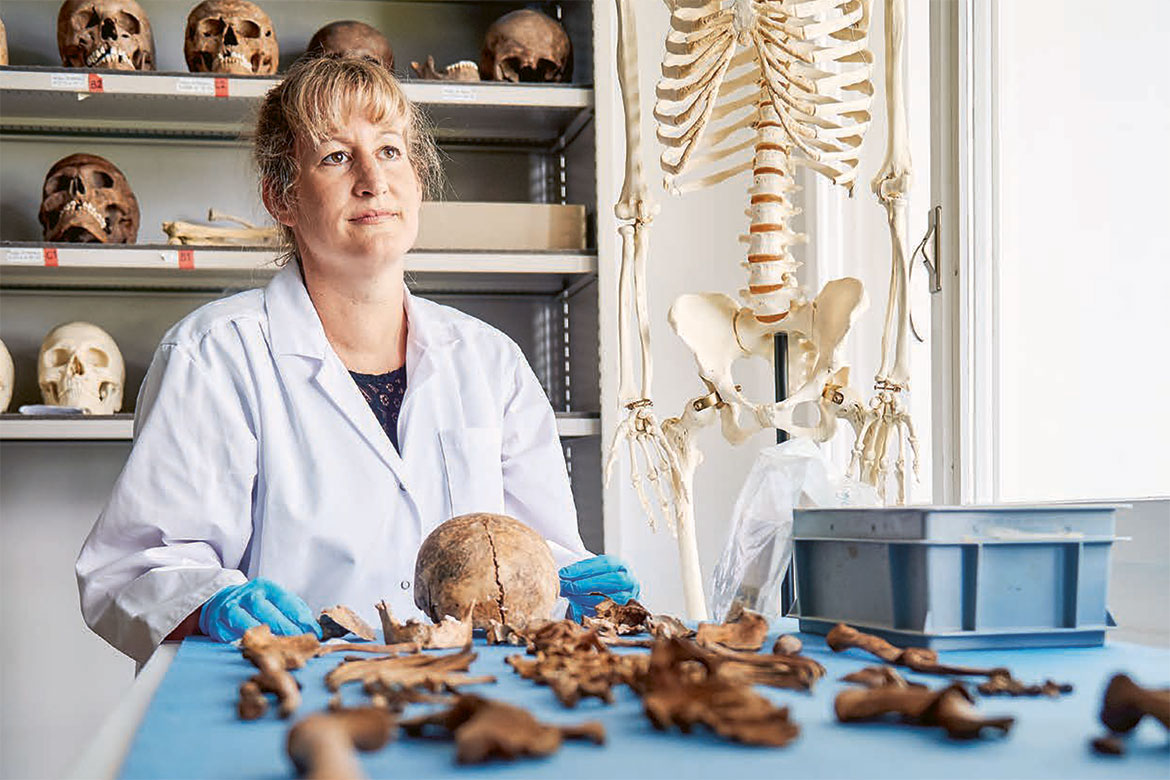
Human bones are everyday objects to Sandra Lösch. Whilst completing her doctorate, she stored them in her own bedroom when there was no space for them elsewhere. | Image: Manu Friederich
What’s a doctoral student to do if high rents mean she’s got little living space, but there’s no more room in the lab for the bones she’s investigating? “The skeleton boxes had to stand in my bedroom”, explains Sandra Lösch laconically, reminiscing about her doctoral studies at the University of Munich. “I didn’t find it at all creepy”. She was investigating bones from the Alpine regions of Bavaria in order to determine the diet and state of health of people in the Middle Ages. Shortly after she finished her doctorate in 2009, she was appointed Head of the Department of Anthropology at the Institute of Forensic Medicine at the University of Bern. Such a meteoric rise is highly unusual in her field, not least because “career prospects are abysmal”, as she herself admits.
Her straightforward manner surely also helped – not just when it comes to dealing with skeletons. And her enthusiasm will also have played a role. “I wanted to delve into the Stone Age since I was a little girl”, says Lösch. There was a kids’ book that set her off, and she can still remember the title: ‘How prehistoric people lived’. And she always wanted to know: “How did they find their food? Who had the idea of domesticating animals? Did someone just call out one day: ‘Hey, there’s a cow, let’s catch it’?”
Bones are like time machines
Sometimes she dreams of a time machine. But as long as these don’t exist, she’ll use bones instead. They can be almost as good. The fact that her working group is situated in the Institute of Forensic Medicine is something of a red herring. To be sure, Sandra Lösch and her team are consulted when skeletonised or mummified corpses have to be identified for criminal cases. “There’s maybe one such case every two months”, she says. But her research focus is really in the field of bio-archaeology and paleopathology. She wants to find out what millennia-old, (pre-)historical skeletons can tell us. To this end, she is aided by both high-tech analytical techniques and – as is so often the case in her discipline – by sheer good luck.
It’s thanks to the birthday wish of a seven-year-old farmer’s boy from Oberbipp that Sandra Lösch came to her biggest case. The boy in question wanted to drive his granddad’s excavator for the first time on his birthday, and he was given the task of digging up a big rock from a field. It proved to be a 7.5 tonne covering slab of a dolmen from the Neolithic Age, dating back to between 3400 and 3000 BC. Under it lay some 40 well-preserved skeletons – which was a truly rare find, because such graves have usually been emptied before. “It was a spectacular find”, cries Lösch. “It’s still my baby!”
Luckily, the boy’s family promptly informed archaeologists of their discovery. It took just five months to excavate the skeletons. The researchers worked day and night, wearing gloves and face masks, and to be extra-careful they also took DNA samples of their own saliva for comparison purposes, so that they could exclude any contamination that might nevertheless occur.
Archaeologists and anthropologists used to be primarily concerned with morphology. In other words, they used the form of bones to determine the age, gender and body size of skeletons, and were also perhaps able to make a rough estimate of their origins. Today, researchers can also apply the whole arsenal of modern biochemical analysis. Genetic analysis enables them to clarify family relationships thousands of years later, and also to investigate pathogens. Stable isotopes offer information about diets and migrations, and can do so in chronological order: tooth enamel is only formed during childhood and youth, and the isotopes stored there can provide information about where the person in question lived during their youth. Bones store information on the previous ten to twenty years, hair on the last few months. In future, researchers will even be able to reconstruct characteristics such as hair colour and eye colour by using ancient DNA. “It’s really cool”, says Lösch.
It’s even helpful in criminology. Recently, her team helped to name a corpse that had no identification papers on it. Their isotope analysis showed that it was a man from the former Yugoslavia who must have entered Switzerland between three and seven years earlier, and who also spent his final months here.
Profiting from climate change
The analyses of Oberbipp are still ongoing, and the results are eagerly awaited. Other studies by the Bernese working group can already give an intimation of what is possible. Using finds from an Iron-Age burial ground at Münsingen-Rain (ca. 400 to 200 BC), they were able to show that men ate more meat than women, especially in cases where they were buried with weapons. Conversely, they were surprised to learn that the diet of Roman gladiators in today’s Turkey mostly comprised barley and wheat, which is indicative of low social status. Isotope analysis also proves that many early societies were patrilocal, with their womenfolk coming from outside. In short: “We answer research questions in the humanities by using methods from the natural sciences”, explains Lösch.
Lösch hopes that they will also soon be able to make a contribution to medical knowledge with a new DNA laboratory at their Institute in Bern. She wants to focus more on investigating old illnesses. When and where did the pathogens of the plague and tuberculosis first occur, and how did they travel? When did they become virulent? How did they evolve over the millennia? Until now, the only information we’ve had has been found in unreliable chronicles. “We want statistics, not speculation”, insists Lösch.
When their new equipment is ready, it would be nice if they could focus on new findings from out in the field. To this end, Sandra Lösch is counting on the rising temperatures in the atmosphere. “I’m a bit of a climate-change profiteer”, she admits, slightly embarrassed. The melting icefields on the Schnidejoch (2,756m asl) between the cantons of Bern and Valais have already brought hundreds of objects to light from the last 6,500 years of human history, such as bows, arrows and Roman hobnails. Perhaps at some point, even a new Ötzi might be revealed on the Schnidejoch, speculates Lösch: “A new ice mummy would be great!” They could even call it “Schnidi”.
Christian Weber works as a science editor at the Süddeutsche Zeitung.

